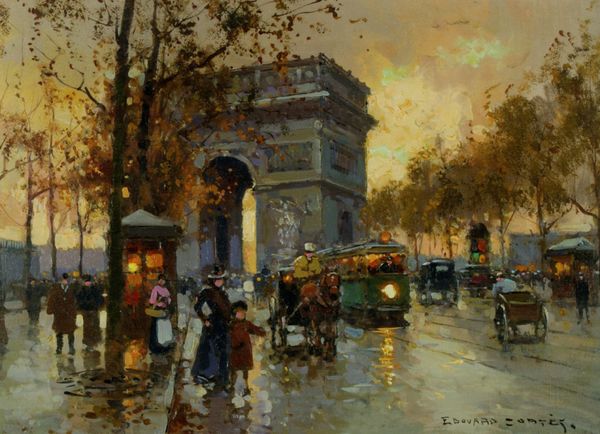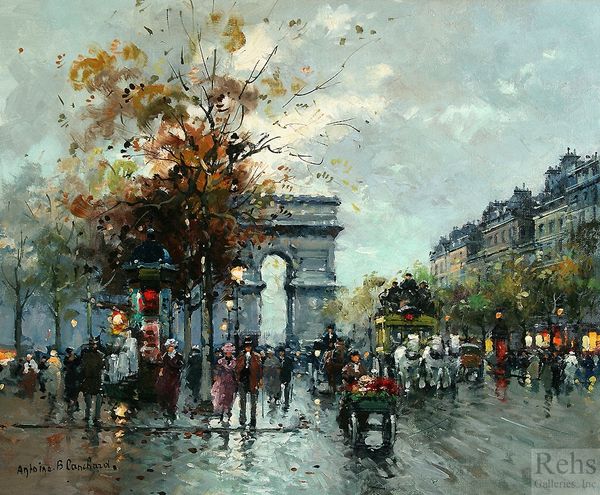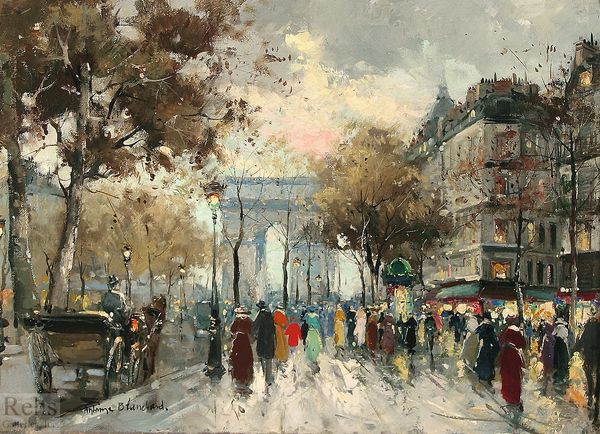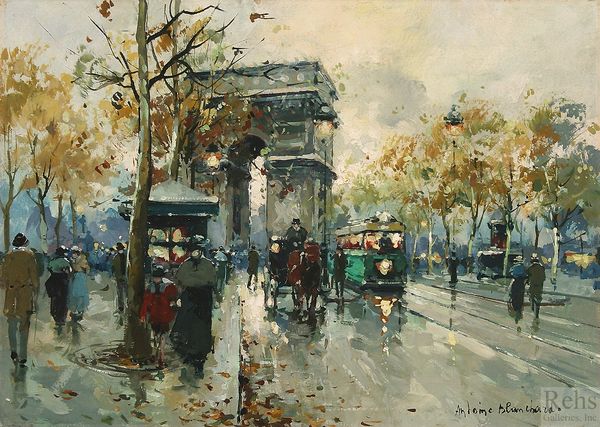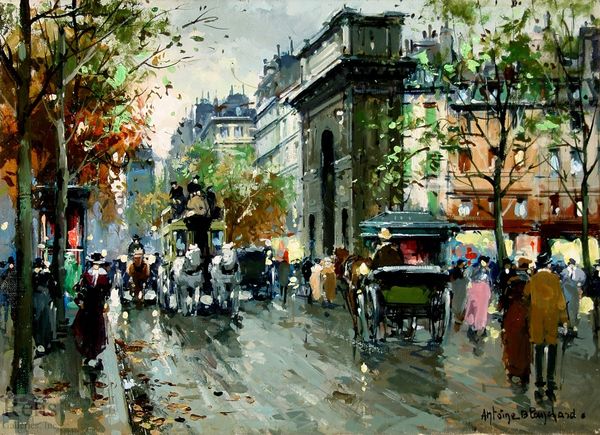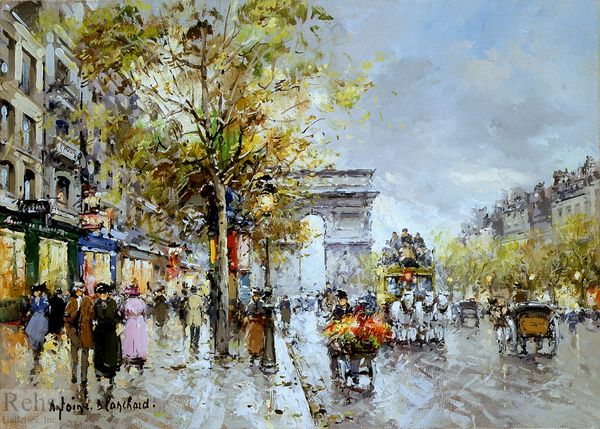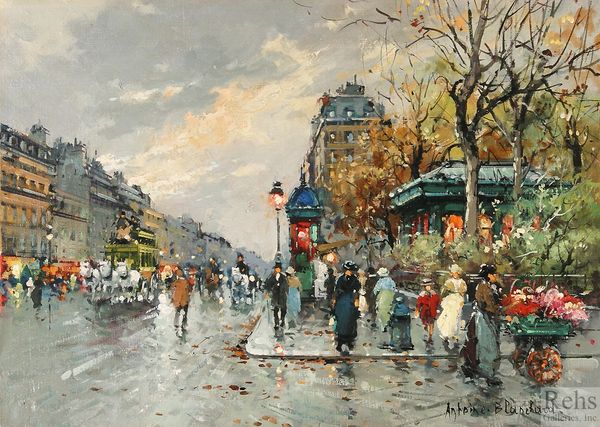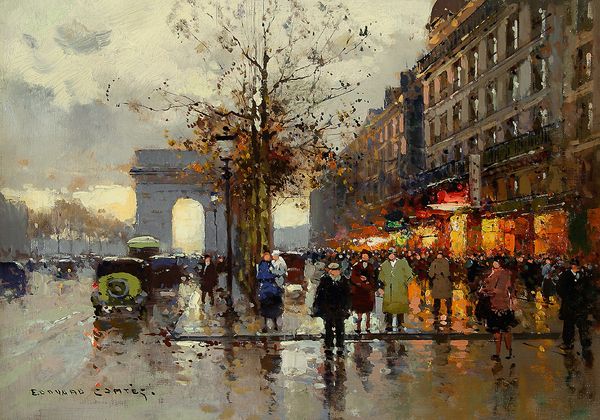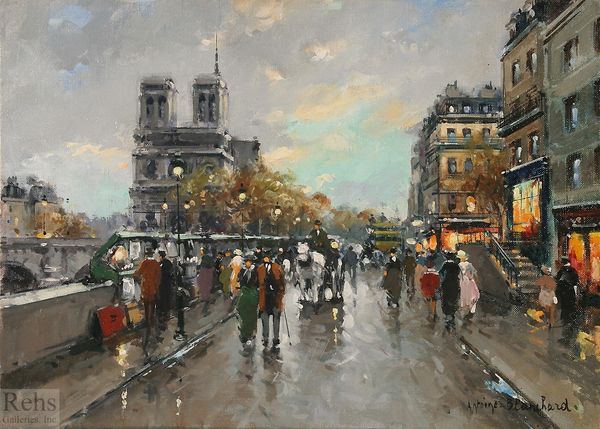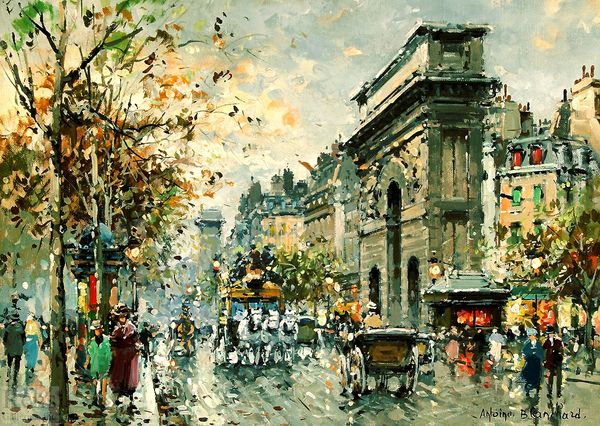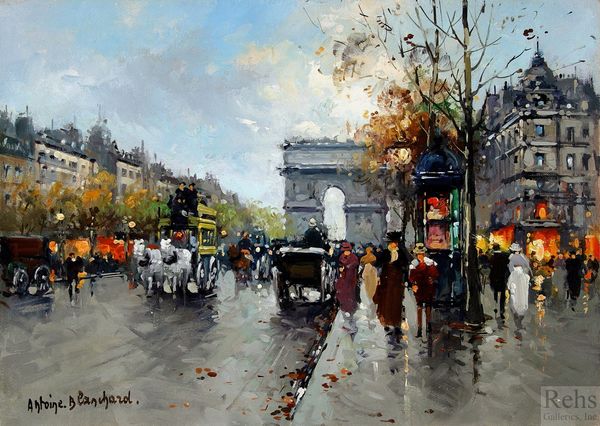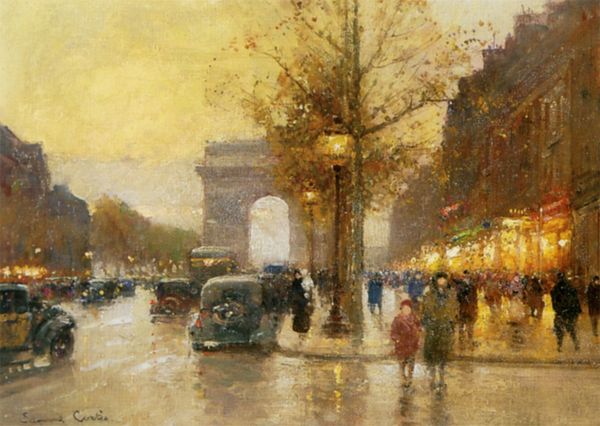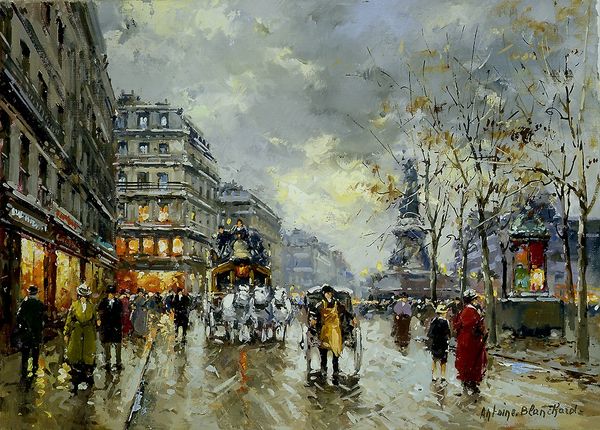
painting, oil-paint
#
tree
#
urban landscape
#
painting
#
impressionism
#
street view
#
impressionist painting style
#
oil-paint
#
vehicle
#
landscape
#
urban cityscape
#
impressionist landscape
#
oil painting
#
road
#
urban art
#
square
#
cityscape
#
genre-painting
#
street
#
building
Copyright: Antoine Blanchard,Fair Use
Editor: Here we have Antoine Blanchard’s oil on canvas, titled "Champs Elysees." I’m struck by how it captures the hustle and bustle of city life; it feels a bit melancholic despite all the activity. What can you tell me about it? Curator: It's interesting to consider this genre scene through a materialist lens. Beyond just depicting a romantic view of Paris, we might ask: What kind of labor went into creating this image? Blanchard was known for producing many of these Parisian street scenes. What does this mass production suggest about the art market and its relationship to consumerism at the time? Editor: So, instead of focusing on the artistic expression, we should consider how it reflects broader economic trends? Curator: Precisely. The materiality of the painting – the canvas, the oil paint – all required extraction, manufacturing, and distribution. Consider the socioeconomic status of the individuals consuming these artworks. The accessibility of these images would vary drastically according to social class. What are the effects of such disparity of consumption? Editor: I hadn’t thought about it that way before. I was more focused on the style, the impressionistic brushstrokes and the overall atmosphere of the piece. Curator: And what materials constitute such stylistic choices? Think about the production of specific pigments during that time and how scientific advances impacted painting during that era. Also consider the labour needed to produce these synthetic paints and its affect on Blanchard's output. How many "Champs Elysees" paintings did he make in his career, and who purchased them? Why is his work today considered decorative, rather than a critical reflection of modern life? Editor: That’s fascinating. I see how a materialist perspective opens up a completely different way to analyze art beyond just its aesthetic qualities. I will certainly keep these factors in mind for my studies. Curator: Indeed, questioning the conditions of art production encourages us to confront power structures and societal values inherent within the art object. It sheds light on what is represented and the how and why it is accessible (or inaccessible) to diverse audiences.
Comments
No comments
Be the first to comment and join the conversation on the ultimate creative platform.
